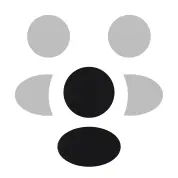Quick Summary:
- Website maintenance is vital for security, speed, and growth.
- Regularly update software, back up, monitor security, and check links.
- Actively manage your site to stay relevant and drive conversions.
- Skipping maintenance creates risks and can cost more later.
Table of Contents
- 1. Introduction to Website Maintenance
- 2. Why Website Maintenance Matters
- 2.1 Ensure Security & Protect Your Users
- 2.2 Improve Performance & User Experience
- 2.3 Boost SEO & Visibility
- 2.4 Maintain Business Continuity & Avoid Costly Breakdowns
- 3. What Tasks Are Included in a Website Maintenance Plan
- 3.1 Core Software / Platform Updates
- 3.2 Security Monitoring, Patching & Backups
- 3.3 Performance Optimization
- 3.4 Content Updates & Functional Checks
- 3.5 SEO-Technical Health Checks
- 3.6 Uptime, Hosting & Infrastructure Monitoring
- 3.7 Reporting & Communication
- 4. How the Maintenance Process Works (Step-by-Step)
- 5. What Does Maintenance Cost?
- 6. Why Choose Qrolic Technologies for Your Website Maintenance?
- 7. How to Choose the Right Website Maintenance Plan for You
- 8. Key Benefits of Investing in Website Maintenance
- 9. Final Thoughts
1. Introduction to Website Maintenance
Website maintenance refers to the ongoing tasks required to keep a website running smoothly, securely, and effectively. It goes beyond just building a website—regular upkeep ensures your site remains up-to-date, fast, safe and aligned with your business goals.
2. Why Website Maintenance Matters
2.1 Ensure Security & Protect Your Users
Websites that aren’t maintained become vulnerable to hacking, malware attacks and data breaches. Regular updates, patches and monitoring help protect your site and your customers.
2.2 Improve Performance & User Experience
A poorly maintained website may load slowly, show broken links or fail on mobile devices. These issues frustrate users, increase bounce rates and hurt conversions. Regular maintenance keeps things running smoothly.
2.3 Boost SEO & Visibility
Search engines favour websites that are current, fast, mobile-friendly and free of major errors (such as broken links). Maintenance helps ensure these factors remain strong, positively affecting rankings.
2.4 Maintain Business Continuity & Avoid Costly Breakdowns
If your website goes offline, has critical errors or loses data, it can cost time, reputation and money. Proactive maintenance helps prevent major disruptions.
3. What Tasks Are Included in a Website Maintenance Plan
Here’s a breakdown of common elements included in professional website maintenance services:
3.1 Core Software / Platform Updates
- Updating the website’s CMS (for example, WordPress), themes and plugins to latest versions.
- Ensuring compatibility and removing deprecated features.
3.2 Security Monitoring, Patching & Backups
- Scanning for malware, applying security patches, updating SSL certificates.
- Regular backups of site files and databases so you can restore quickly if needed.
3.3 Performance Optimization
- Speed improvements: image optimization, caching, CDN usage, database cleanup.
- Monitoring and resolving slow-loading pages or server bottlenecks.
3.4 Content Updates & Functional Checks
- Fixing broken links (404s), ensuring forms work, checking browser compatibility.
- Adding or editing content such as images, text, blog posts, landing pages.
3.5 SEO-Technical Health Checks
- Ensuring mobile responsiveness, clean code, proper metadata, optimized images.
- Monitoring indexing, crawling issues, ensuring website structure supports SEO.
3.6 Uptime, Hosting & Infrastructure Monitoring
- Tracking whether the website is accessible, and reacting to outages.
- Reviewing hosting resources, server settings, domain expiry, SSL renewal.
3.7 Reporting & Communication
- Providing regular reports to the site owner on site health, updates done, and recommendations.
4. How the Maintenance Process Works (Step-by-Step)
- Initial Site Audit – Review existing website: performance, security, content, SEO.
- Set Maintenance Plan – Define scope (which tasks, frequency, responsibilities, reporting).
- Implementation & Updates – Carry out updates, backups, fixes, optimizations.
- Monitoring – Track performance, security incidents, uptime, broken links.
- Report & Adjust – Provide feedback, adjust the plan based on results and business needs.
- Ongoing Support – Continuous service: maintenance is not a one-time fix but an ongoing commitment.
5. What Does Maintenance Cost?
Maintenance costs vary widely depending on website size, complexity, platform, traffic, and scope of tasks. For example:
- Smaller sites or blogs: lower cost.
- Business-level sites / eCommerce / high traffic: higher cost.
It’s best to tailor a plan that meets your site’s needs so you pay for what you actually require.
6. Why Choose Qrolic Technologies for Your Website Maintenance?
At Qrolic Technologies (https://qrolic.com), we specialise in managing, updating and nurturing WordPress websites for businesses of all sizes. Here’s why we’re the right partner:
- Exclusive wordpress Experts — We live and breathe WordPress, delivering custom solutions for complex sites.
- Comprehensive Service — From updates & security to performance optimization, we handle all aspects so you don’t have to worry.
- Transparent Communication — We keep you in the loop, provide regular reports and act as your ongoing partner, not just a vendor.
- Focus on Growth — We don’t just maintain; we optimise your site to scale, perform, and convert, so your website becomes a growth engine.
- Trusted by Large Companies — We service high-traffic websites, eCommerce platforms and publishing sites where reliability, speed and scalability matter.
If you want to stop worrying about your website and focus on growth, our maintenance plans are built to deliver peace of mind and measurable results.
7. How to Choose the Right Website Maintenance Plan for You
- Assess Your Website Type & Traffic – A simple brochure site needs different maintenance than an eCommerce store with thousands of visitors.
- Define What’s Included – Check exactly what tasks are in the plan (updates, backups, monitoring, content changes).
- Check Frequency & Response Time – How often will updates and backups take place? How fast will issues be resolved?
- Look for Reporting & Transparency – Regular status reports, clear communication are essential.
- Budget Wisely – Higher cost doesn’t always mean better; match service scope to your needs.
- Ensure Scalability – Your site will grow. Ensure the provider can handle increased traffic, more pages, new features.
- Evaluate Reputation & Expertise – Especially for platforms like WordPress, choose a provider proven in your type of site.
8. Key Benefits of Investing in Website Maintenance
- Improved site security and less risk of costly downtime.
- Better user experience, faster loading, fewer errors.
- Higher search engine rankings, more organic traffic.
- Greater trust with your brand—professionally maintained sites signal credibility.
- Less stress and resource drain—your team can focus on growth instead of firefighting technical issues.
- Ability to scale your website as your business grows without getting stuck with legacy code, slow performance or outdated architecture.
9. Final Thoughts
Website maintenance is not optional—it’s a continual process that keeps your online presence healthy, secure and performing. By choosing a provider like Qrolic Technologies, you can ensure your site is managed by professionals who understand WordPress, deliver ongoing support, and help you scale. If you want a plan that fits your business and keeps your site moving forward, now is the time to act.






